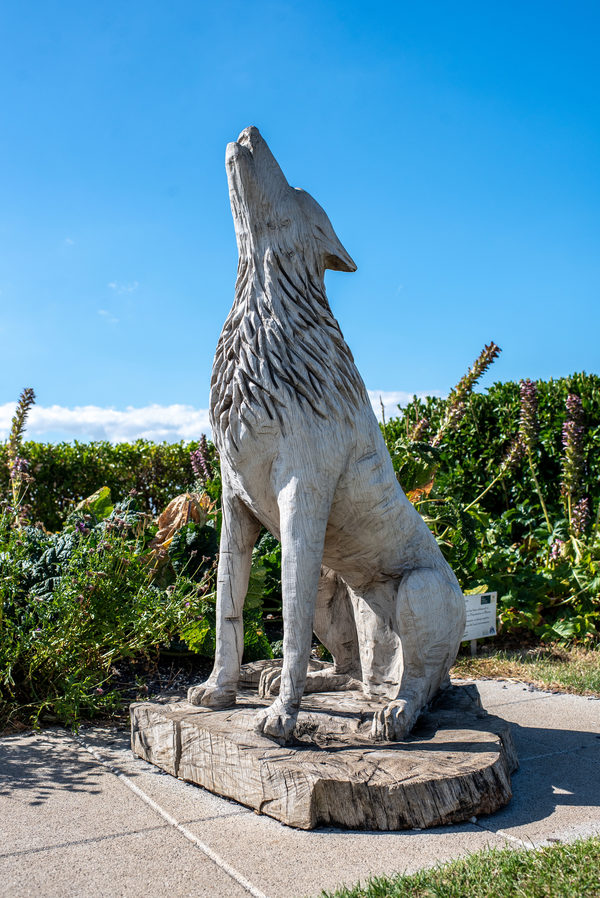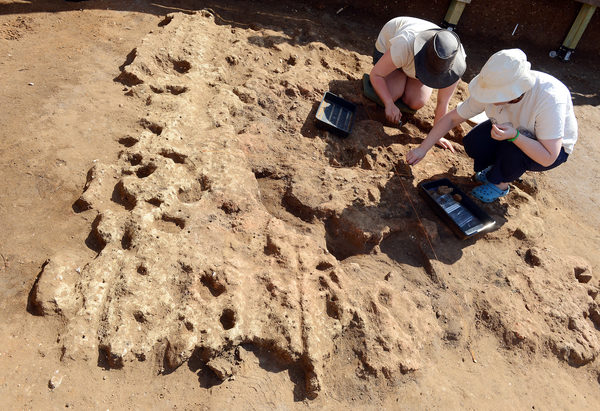1
Attraction 1:
Bloodgate Hill Fort
This is the site of a destroyed Iron Age hillfort and is one of only six prehistoric earthwork forts in Norfolk. Aerial photographs and geophysical investigations have established the layout of the fort, which comprises of a single banked and ditched enclosure with a large central ring ditch. Excavations in 2003 revealed that the hillfort ditch had been re-cut some time after its initial construction.
View Venue

2
Attraction 2:
Brancaster Beach
King's Lynn
Brancaster beach with its wide expanse of golden sands is perfect for Summer sandcastles or Winter wanders, even on the busiest of days there is room to find your own space and get lost in its tranquil calm.
View Venue

3
Attraction 3:
Branodunum Fort
Branodunum is one of the eleven forts along the South and East coasts of England known as Saxon Shore Forts. The Romans built these forts during the 3rd century. At first they were used to protect and control shipping and trade around the coast; later they helped repel raiders from across the North Sea. They remained military garrisons for over 150 years before being abandoned when the Roman army withdrew from Britain.
View Venue

4
Attraction 4:
Dersingham Bog
King's Lynn
Dersingham Bog is part of the Sandringham Royal Estate and includes the largest, most intact example of an acid valley mire in East Anglia. It is also one of the last remaining fragments of lowland heathland in south east England.
View Venue

5
Attraction 5:
Holkham Park
As with so much of the English countryside the look of the Norfolk coast is an intimate blend, part wilderness and part working landscape. From Burnham Overy to Wells the low-lying grazing marshes north of the coast road used to be tidal saltmarshes, separating offshore shingle and dune ridges from the main coastline.
View Venue

6
Attraction 6:
Holme Dunes
At Norfolk’s northwest corner, where The Wash meets the North Sea, Holme Dunes is superbly located to attract migrating birds. It also holds a variety of important habitats which support numerous other wildlife species including natterjack toads, butterflies and dragonflies, as well as a large number of interesting plants.
View Venue

7
Attraction 7:
Hunstanton Cliffs
Hunstanton
The famous red and white striped cliffs at Hunstanton are an eye-catching attraction. Have fun discovering the history and nature of the area by looking for creatures in the rock pools on the beach below or taking a leisurely stroll to view the old buildings perched on the cliff top.
View Venue

8
Attraction 8:
Hunstanton Heritage Gardens
Hunstanton
Hunstanton Heritage Gardens stretch from the Green through the Esplanade Gardens and round the cliff top to the lighthouse.
View Venue

9
Attraction 9:
Hunstanton Wolf Trail
Hunstanton
Explore the gardens and cliff top scenery to trace the story of St Edmund, Hunstanton’s most famous visitor and first patron saint of England. The story and legend or St Edmund, Hunstanton’s most famous visitor can now be explored by a series of way markers which lead you from the cenotaph in the cliff top gardens to the dramatic cliff top location of St Edmund’s chapel.
View Venue

10
Attraction 10:
Kings Lynn Tourism Information Centre
King's Lynn
The distinctive King's Lynn Town Hall is the historic venue that houses the King's Lynn Tourist Information Centre.
View Venue

11
Attraction 11:
Roydon and Grimston Warren
These fantastic adjacent reserves form part of NWT’s Gaywood Valley Living Landscape, and share a rich mosaic of habitats. They include the Tony Hallatt Memorial Reserve, and we have added in recent years The Delft and Rising Heath.
View Venue

12
Attraction 12:
RSPB Snettisham
King's Lynn
Wildlife observation hides give panoramic views across the saline lagoons, salt marsh and the vast expanse of mudflats that make up The Wash. On the biggest high tides from late summer onwards, tens of thousands of wading birds take flight as the incoming tide pushes them off the vast mudflats.
View Venue

13
Attraction 13:
Sandringham House, Museum and Gardens
Sandringham
Sandringham is the much-loved country retreat of Her Majesty The Queen, and has been the private home of four generations of British monarchs since 1862. The house, set in 24 hectares of stunning gardens, is perhaps the most famous stately home in Norfolk and is at the heart of the 8,000-hectare Sandringham Estate, 240 hectares of which make up the woodland and heath of the Country Park.
View Venue

14
Attraction 14:
Seahenge, Holme Timber Circle
King’s Lynn
Seahenge was a prehistoric monument located in the village of Holme-next-the-Sea, near Old Hunstanton in Norfolk. A timber circle with an upturned tree root in the centre, Seahenge was built in the 21st century BC, during the early Bronze Age in Britain, most likely for ritual purposes. After excavation and preservation the monuments permanent home is Lynn museum in King's Lynn.
View Venue

15
Attraction 15:
SHARP - Sedgeford Historical and Archaeological Research Project
Hunstanton
SHARP (the Sedgeford Historical and Archaeological Research Project) is a long-term, independently-run archaeological project. The primary objective is the investigation of the entire range of human settlement and land use in the north-west Norfolk parish of Sedgeford. Established in 1996, SHARP is one of the largest independent archaeological projects in Britain and is firmly rooted in the local community.
View Venue

16
Attraction 16:
Shouldham Warren
King's Lynn
Shouldham Warren is a wooded area on the edge of the fens, located a short distance to the north of the village of Shouldham with a track to the parking and picnic area.
View Venue

17
Attraction 17:
Titchwell Marsh
King's Lynn
Located on the north coast of Norfolk, between the villages of Titchwell and Thornham, Titchwell Marsh is blessed with diverse habitats that include reedbeds, saltmarsh and freshwater lagoons where avocets, bearded tits and marsh harriers nest. There is also a wide sandy beach here, which offers extensive views across The Wash.
View Venue




